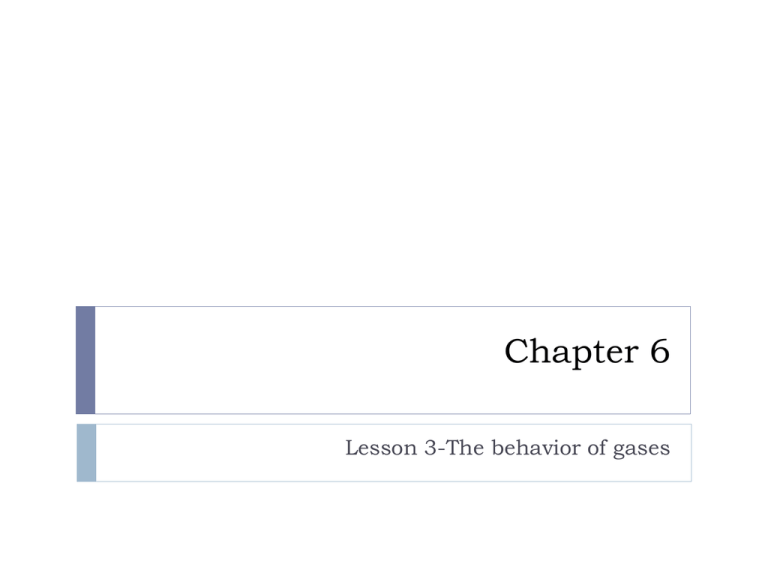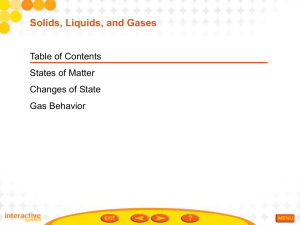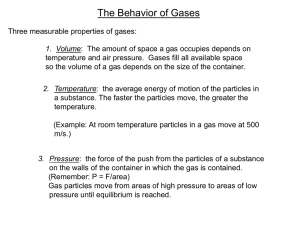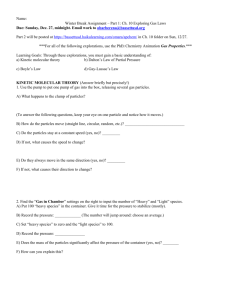Chapter 6 section 3-understanding gases
advertisement

Chapter 6 Lesson 3-The behavior of gases Understanding Gas Behavior Gases behave differently than solids and liquids Changes in temperature, pressure, and volume affect gases Kinetic molecular theory- is an explanation of how particles in matter behave: 1.Small particles make up all matter 2.The particles are in constant, random motion 3.The particles collide with other particles, other objects, or the sides of the container 4.When particles collide no energy is lost. Understanding Gas behavior Gas molecules collide with the container they are in. As a result, the molecules exert a pressure on their container. Pressure- the amount of force applied per unit of area The more a gas is compressed then the higher the pressure Pressure and Volume At a constant temperatureBigger container ( more volume) then less pressure The particles hare more room to move so less particles are bumping into each other and the container Smaller container (less volume) then more pressure The particles have less room to move so they are constantly bumping into each other So an inverse proportion It is also a famous law- Boyle’s Law Boyle’s law Robert Boyle- British (1627-1691) Boyle’s law- if the pressure of a gas increases if the volume of the gas decreases, and if the volume of the gas increases then the pressure decreases Temperature and Volume At a constant pressureAt a low temperature, the average kinetic energy is low so the particles are close together so the volume of the gas is low. At high temperature, the average kinetic energy is increased so the volume of the gas is increased. They are directly proportional This is another famous law- Charles’s law Charles’s Law Jacque Charles (1746-1823)- French scientist Charles’s law states- that the volume of a gas increases with increasing temperature, if the pressure is constant.






